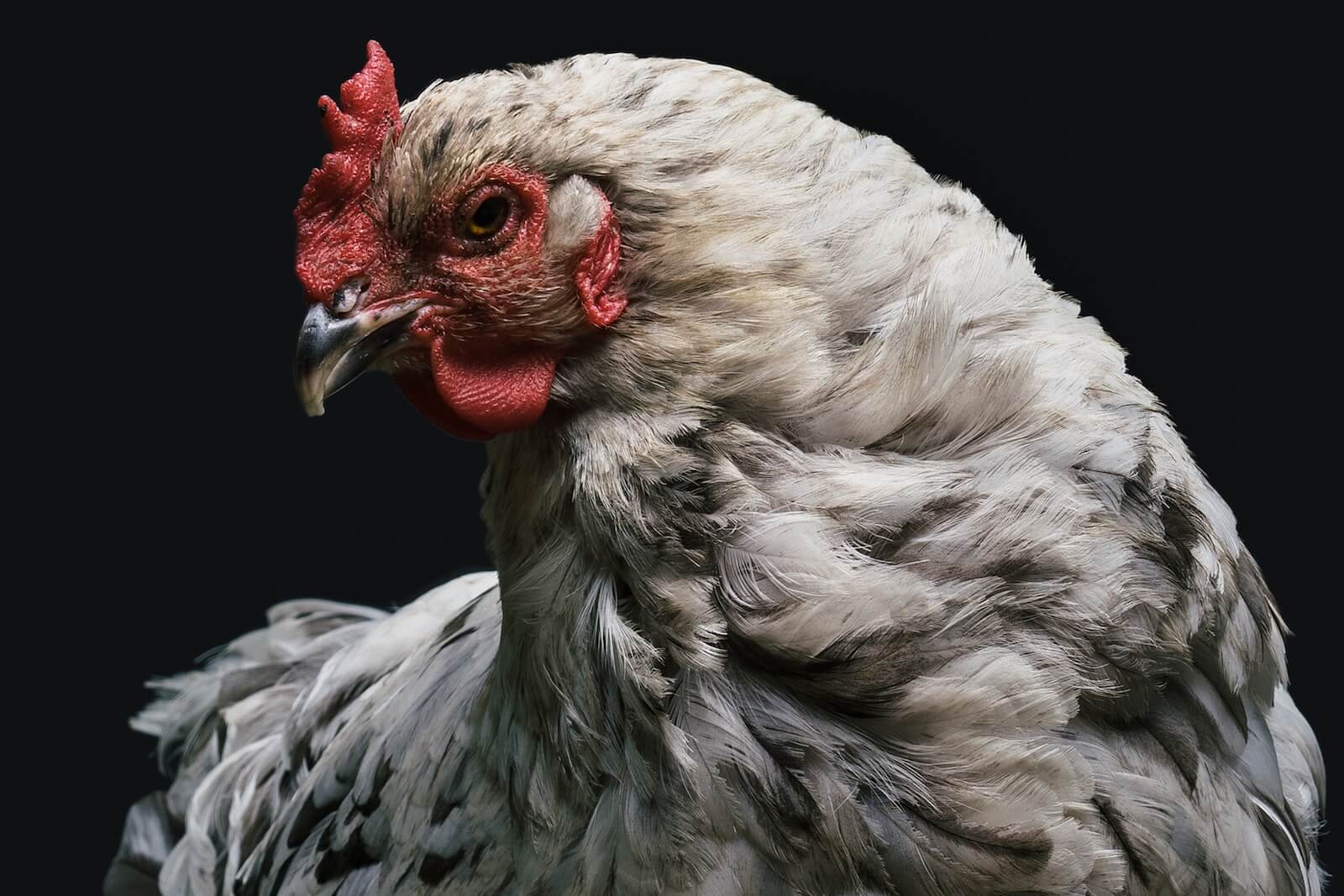Poultry weight monitoring is an important aspect of poultry farming. In a given flock, poultry weight serves as a key performance indicator. When bird weight is within expected threshold, this suggests a flock is healthy and at potential for high performance.
Certain breeds and flock types have expected poultry weight at different ages in their life. If you are a commercial poultry farmer, you can obtain this benchmark from your flock supplier, as part of the flock schedule. Birds weighing frequency can be weekly, bi-weekly or monthly, depending on the age of a flock.

If you are a commercial poultry farmer, you can obtain a poultry weight tracking chart corresponding to your poultry breed from your flock supplier.
Poultry weight is just one of over 10 flock performance indicators that can be measured and tracked. Here are some key aspects that you can determine from monitoring the weight of birds in a flock.
How poultry weight tracking works
Poultry breeds, especially commercial ones have respective weight charts, by which you can track weight.
Here’s is a quick demo by FarmUp how you can do poultry weighing.
You can buy weighing scales purposely made for poultry weighing. If not, you can get creative and use whatever weight scales you have.
Why you should monitor poultry weight
Health
Healthy poultry birds are able to achieve and maintain expected weight range in their age and flock type class. As a poultry farmer you want to always ensure that your birds are in optimal health and at potential for high productivity. Monitoring and tracking birds weight in a flock can therefore be one way to determine the general health of a flock.
The achievement and maintenance of expected poultry weight thresholds for broiler birds means that you can expect to fetch good returns in the market. For layers birds, this can mean that your birds are likely to maintain a high egg production rate. Additionally for layers, eggs produced can accordingly be expected to be of best quality in size, shell texture, hardness and color.
Feed quality
When your flock is fed quality feeds and amounts as specified in a flock schedule, birds in the flock will most likely achieve and maintain expected weight by age. For both layers and broiler flocks, bird weight by age, can serve as an indicator that birds are feeding on quality and sufficient amount.
If birds in a flock do not achieve or maintain a given weight per bird by age, you can investigate if feed quality is substandard. Furthermore, you can determine if the amounts provided are sufficient for the flock by number of bird and age. For a high yield flock, the last thing you want is to subject your flock to malnutrition.
A flock should be fed feed amounts by number of birds in the flock, by age, and purpose, as advised by the flock supplier in a flock schedule. When you do this accordingly, you can easily rule out feed quality and amount as the culprit in underweight birds.
Feed conversion ratio (FCR)
Feed conversion ratio or FCR is a measure of the efficiency by which birds convert food or body weight or output. Without poultry weight monitoring in a flock, it is impossible for you to calculate FCR. FCR can be calculated as:
FCR = Amount of feed consumed / Weight gained Or
FCR = Amount of feed consumed / Mass output Output for a layers bird include both weight gained and eggs produced in a given period. A high FCR value means that the cost of feeding a flock is high. A low FCR value means the cost of feeding a flock is low.
FCR differs by country. As of 2011, in the US, a broiler maturing in 39 days had an FCR of 1.6. In the same year, a layers bird producing 330 eggs per year had an FCR of 2.
Disease detection
Usually, when diseased, birds lose appetite and therefore lose weight. Weight loss beyond a flock’s given benchmark can serve as an indication that birds in your flock are diseased. Additionally, the inability to maintain specified weight per bird by age, can indicate disease.
Weight gain beyond a specified range can also indicate over feeding. Over feeding does not necessarily result to high productivity. In any case, it may compromise bird’s health and result to a higher FCR than should be the case.
Key takeaways
- The achievement and maintenance of expected bird weight is an indication of flock health
- Diseased birds are likely to lose weight
- Underweight birds or a loss of weight in birds, is likely to result to an overall drop in productivity
- Poultry weight is a key component in the calculation of feed conversion ratio (FCR)


2 responses to “Poultry weight monitoring: 4 Reasons why you should care”
•
[…] poultry weighing scale is necessary especially if you’re keen on keeping poultry records. Poultry weight is a […]
•
[…] Poultry weight monitoring: 4 Reasons why you should care […]